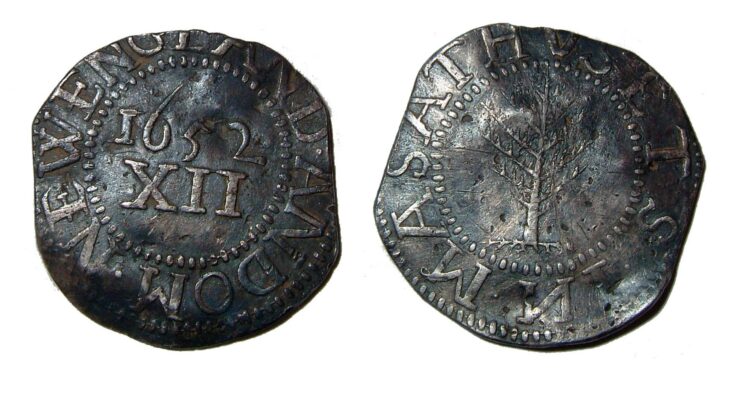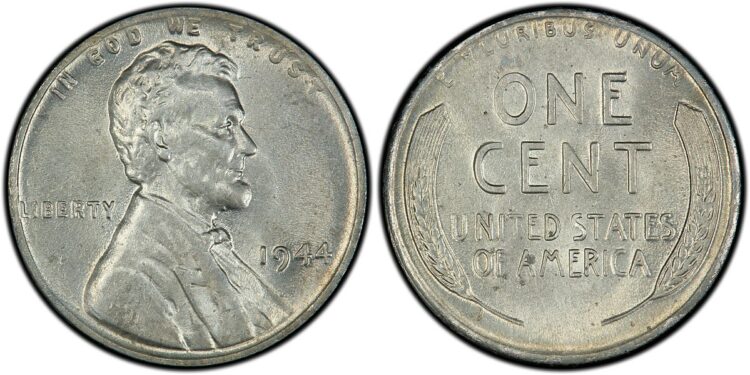
The fascinating world of coin collecting includes a wide array of valuable and rare pieces, with numerous factors contributing to a coin’s worth. Among the vast array of US coins ever produced, certain examples stand out for their rarity, historical significance, and impressive value. Delving into the most highly sought-after and expensive US coins provides an intriguing look into the captivating realm of numismatics.
Some of the most valuable US coins have achieved notable sales records at auction, garnering astonishing price tags and capturing the attention of collectors and enthusiasts alike. These prized coins often come from early mintings, bearing distinctive mint marks or unique errors, and boast rarity that adds to their allure. The factors contributing to a coin’s value are as diverse as the pieces themselves, with historical context and market trends impacting the desirability of certain specimens.
As we explore these exceptional US coins, their stories and the astonishing prices they have fetched at auction, a newfound appreciation for the intricacies of coin collecting emerges. By understanding the factors that contribute to a coin’s value, collectors and enthusiasts alike can enhance their appreciation for these rare and beautiful pieces that represent an important aspect of American history.
Most Valuable US Coins
Colonial Coins
The earliest coins in the United States were Colonial coins, which were struck between 1652 and 1776. These coins originated from the original 13 colonies and have significant historical importance. Some of the notable Colonial coins include the 1652 Pine Tree Shilling, 1739 Higley Copper, and the 1776 Continental Dollar. These coins are valuable due to their rarity, minting detail, and historical significance.

Rare Mint Errors
Mint errors are coins that have some form of mistake or irregularity during their production process. These coins often have unique features that make them highly collectible and valuable. Some examples of notable mint errors include the 1944 Steel Wheat Penny, 1955 Double Die Lincoln Cent, and the 2000 Sacagawea Dollar/Quarter Mule. Their value increases with the uniqueness and severity of the minting error.
| Coin | Mint Error Description |
|---|---|
| 1944 Steel Wheat Penny | Struck on steel planchets from the previous year |
| 1955 Double Die Lincoln Cent | Obverse side has a double striking, appearing as a doubled image |
| 2000 Sacagawea Dollar/Quarter Mule | Struck with state quarter obverse die combined with a Sacagawea dollar reverse die |
Five Important Coins
- 1794 Flowing Hair Silver Dollar: The first silver dollar minted by the US government, making it a key piece of American numismatic history. An example of this coin sold for over $10 million in 2013.
- 1933 Saint-Gaudens Double Eagle: This gold coin is considered one of the rarest and most valuable coins in the US, as only one specimen is available for private ownership. This coin hammered for $18,872,250 in 2021.
- 1913 Liberty Head Nickel: Only five coins are known to exist, and one example sold for $3,737,500 in 2010. These nickels are among the most sought-after rarities in US coinage.
- 1927-D Saint-Gaudens Double Eagle: This coin has the lowest mintage of any regular-issue US gold coin and is highly valued for its rarity. Examples of this coin have sold for over $1 million.
- 1909-S VDB Lincoln Cent: The rarest Lincoln cent, with a mintage of only 484,000. The coin features the designer Victor David Brenner’s initials “VDB” on the reverse, which was removed in later issues, making this an important and valuable key date.
Coin Value Factors
When evaluating the value of US coins, there are several factors to consider. In this section, we will explore three primary factors that influence coin values: Coin Rarity, Coin Condition, and Coin Demand.
Coin Rarity
Coin rarity refers to the number of coins minted and the availability of a specific coin in the marketplace. Generally, rare coins are more valuable because they are harder to find. Some factors that can contribute to a coin’s rarity include:
- Low mintages: The number of coins produced during a specific year or at a specific mint location can impact rarity.
- Error coins: Mistakes in the minting process may create error coins that are extremely rare and highly sought after.
- Varieties: Different die designs and mint marks can create unique varieties within a coin series, adding to their rarity and value.
Coin Condition
The condition of a coin plays a crucial role in determining its value. Coins in the best possible condition are often worth significantly more than their circulated counterparts. There are many methods for evaluating a coin’s condition, but the Sheldon Scale is a widely accepted standard in the numismatic community. This scale ranges from 1 to 70, with 1 representing the poorest condition and 70 being the highest grade.
- Circulated coins: Coins that have seen everyday use and wear can still be valuable, especially if they are rare or in demand.
- Uncirculated coins: Coins that have never been used in circulation and maintain their original mint luster are typically more valuable than circulated coins.
Coin Demand
Coin demand is a crucial factor in determining the value of a coin. Even rare and high-quality coins may not be valuable if there is little demand for them in the marketplace. Factors influencing coin demand include:
- Historical significance: Coins that played a unique role in history or have an interesting backstory can be more attractive to collectors.
- Popular series: Some coin series, such as the US Morgan dollar or the Lincoln cent, have a large following of collectors, increasing the demand for coins within those series.
- Market trends: The overall state of the economy, geopolitical events, and the precious metals market can all impact the demand for coins.
By understanding these three key value factors, collectors and investors can make more informed decisions when buying and selling US coins.
Historical Context
Significant Time Periods
The history of U.S. circulating coins can be traced back to the Coinage Act of 1792, which established the United States Mint and regulated the coinage of the country. This period, known as the American coinage (1792 – c. 1837), saw various denominations being introduced, such as Half Cent, Cent, Half Dime, Dime, Quarter, and Half Dollar.
In 1793, the U.S. Mint delivered its first circulating coins, the copper cents. However, their large size and peculiar design caused public discontent. Later on, various designs and modifications were made to the U.S. coins, making them a crucial part of the nation’s numismatic history.
Coin Production Milestones
Throughout the years, a few U.S. coins have gained significant value due to their rarity, historical importance, and condition. Some examples of the most expensive and valuable coins include:
- 1933 Double Eagle: This $20 gold coin holds the record for the most expensive coin, with a recent sale price of $18.9 million in 2021.
- 1804 Draped Bust Dollar: Another notable coin, often called “America’s First Silver Dollar,” was last acquired for $12 million.
- 1913 Liberty Nickel: A rare coin with only five known examples, one of which was graded by PCGS at a PR66 condition and is considered one of the most valuable United States coins ever.
Philadelphia Mint
Established in 1792, the Philadelphia Mint was the first and largest mint in the United States. It played a significant role in producing and delivering the nation’s first circulating coins in 1793. Over the years, the mint has produced a vast number of historical and valuable coins that have now become an essential part of the country’s numismatic collection.
Investment and Collecting
Building a Collection
Starting a valuable coin collection can be an exciting and rewarding experience. One starting point for many collectors is the 1909-S VDB Lincoln Cent, widely considered the “Holy Grail” of Lincoln pennies due to its rarity. In building a collection, it is essential to strike a balance between rarity and value. Generally, rarer coins are more valuable, but it is essential to diversify your portfolio with a variety of coins to mitigate market fluctuations. Some suggested collectibles include half cents, large cents, early nickels, dimes, quarters, half dollars, and silver dollars.
Coin Investment Strategies
Investing in rare coins requires careful consideration of several factors. Here are some strategies to follow:
- Diversification: Just like any investment, diversification helps reduce risk. Collect a variety of coins to minimize market fluctuations and maximize returns.
- Research: Educate yourself on coin history, rarity, market trends, and pricing before making a purchase.
- Buy high-quality coins: Aim to acquire coins in excellent condition or coins graded by reputable grading services like PCGS.
- Invest for the long term: Coin investments generally appreciate over time; do not expect quick returns.
- Consult experts: Seek advice from professional dealers or coin investors to ensure you make informed decisions.
Coin Care Tips
Proper handling and storage of your coin collection are crucial in preserving its value. Follow these tips to keep your coins in pristine condition:
- Handling: Use soft gloves or hold coins by the edges to avoid transferring oils or dirt from your fingers. This minimizes the risk of corrosion, tarnishing, or other damage.
- Storage: Store coins in an airtight container or in specialized coin albums, ideally in a dry, moderately cool, and stable environment.
- Cleaning: It is recommended not to clean coins, as improper cleaning can significantly devalue them. If absolutely necessary, consult a professional for advice on safe cleaning methods.
- Documentation: Keep track of your collection, including purchase dates, prices, and any relevant information, in an organized manner.
- Insurance: If you have devoted considerable resources and effort to your collection, consider insuring it against theft, natural disasters, or other potential losses. Consult professional appraisers to determine accurate values for your coins before taking out a policy.
